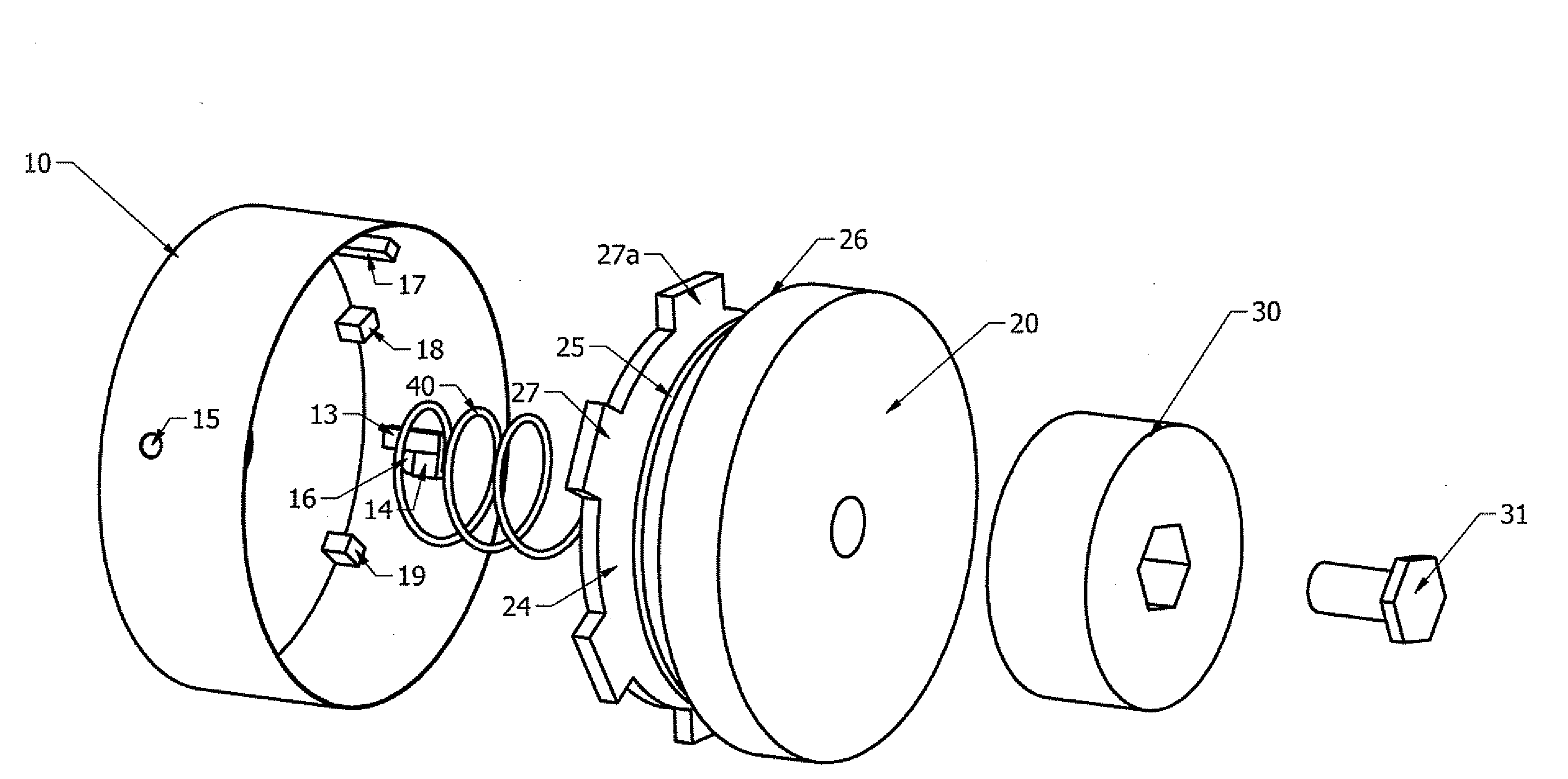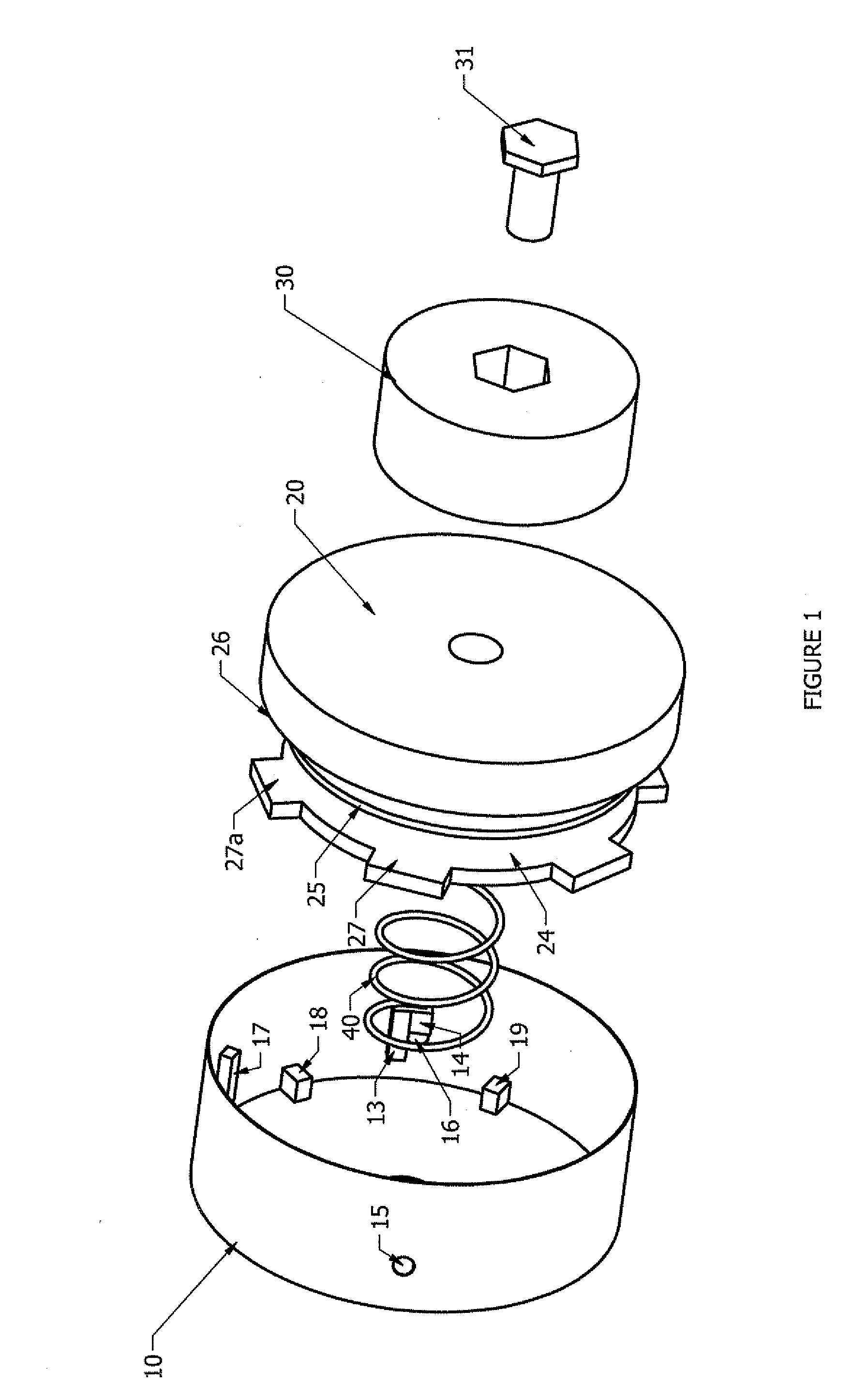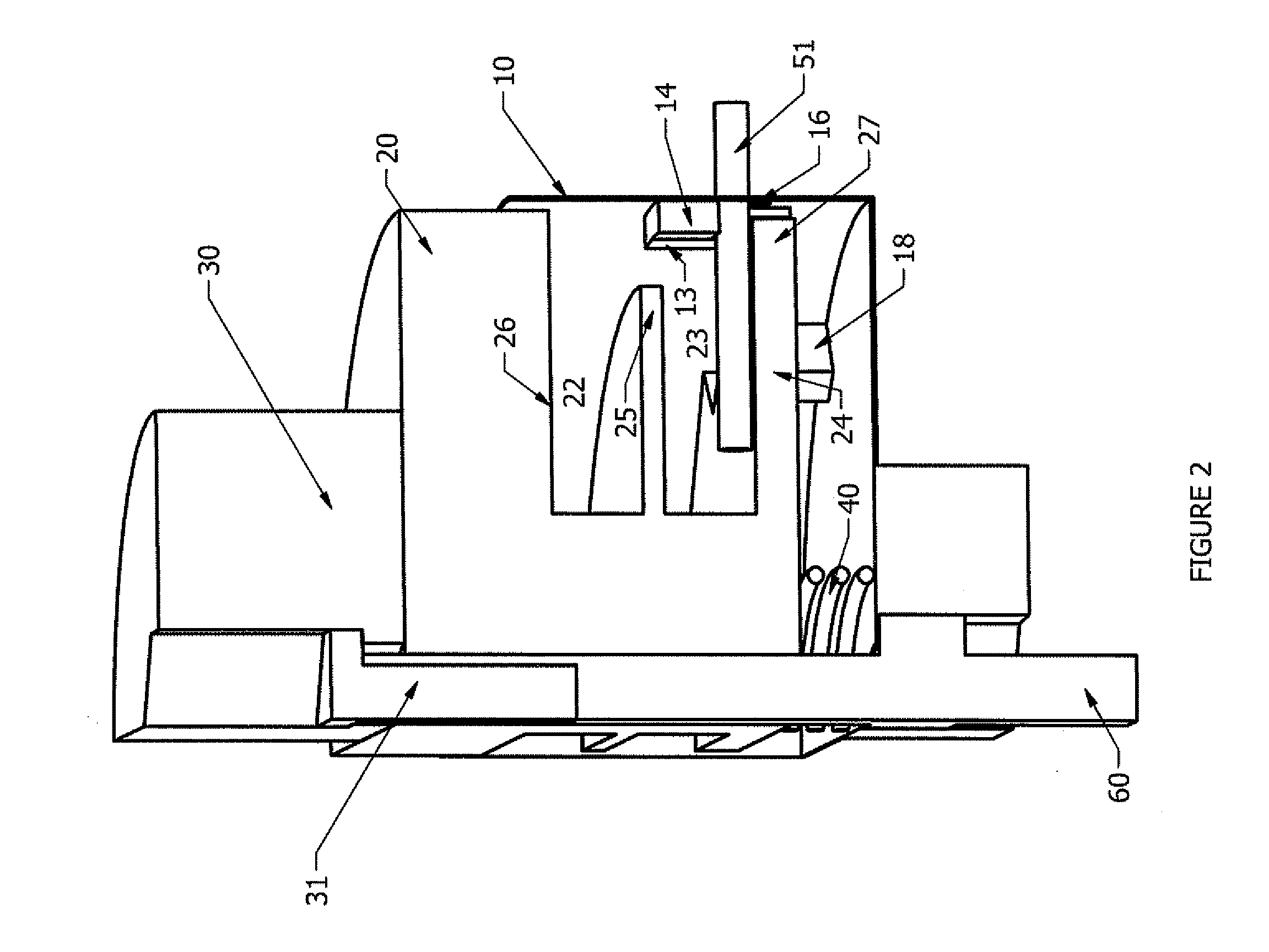Filament Clamp for a Vegetation Trimmer
a technology of vegetation trimmer and filament clamp, which is applied in the field of spools, can solve the problems of shortened life span of the trimmer, more filament to be paid out from the spool, and tangle of filament, and achieve the effect of significantly reducing the amount of time needed to cut an area of vegetation
- Summary
- Abstract
- Description
- Claims
- Application Information
AI Technical Summary
Benefits of technology
Problems solved by technology
Method used
Image
Examples
Embodiment Construction
[0018]Referring to FIGS. 1 and 2, hub 10 is rotationally locked to shaft 60. Filament 51 is wound around spool 20 in cavity 23. Cavity 23 is created by walls 24 and 25. When assembled, filament 51 extends through aperture 16 see FIG. 1. When spool 20 is in second position, arm 18 engages momentarily with arm 27 to regulate the amount of relative rotation between hub 10 and spool 20 and also causes spool 20 to enter into first position. Bolt 31 threads into shaft 60 to contain the entire assembly.
[0019]Referring now to FIG. 2, arm 13 rotationally locks arm 27 to prevent relative rotation between spool 20 and hub 10. Biasing member 40 normally biases arm 27 against arm 14 to forcibly clamp filament 51. When bumper sub 30 is struck against a hard surface, spool 20 enters into second position.
[0020]Referring now to FIG. 3, arm 27 is disengaged from arm 13. This allows spool 20 to rotate relative to hub 10 to allow filament 51 to unwind from spool 20. Further, arm 27 is separated from ar...
PUM
 Login to View More
Login to View More Abstract
Description
Claims
Application Information
 Login to View More
Login to View More - R&D
- Intellectual Property
- Life Sciences
- Materials
- Tech Scout
- Unparalleled Data Quality
- Higher Quality Content
- 60% Fewer Hallucinations
Browse by: Latest US Patents, China's latest patents, Technical Efficacy Thesaurus, Application Domain, Technology Topic, Popular Technical Reports.
© 2025 PatSnap. All rights reserved.Legal|Privacy policy|Modern Slavery Act Transparency Statement|Sitemap|About US| Contact US: help@patsnap.com



